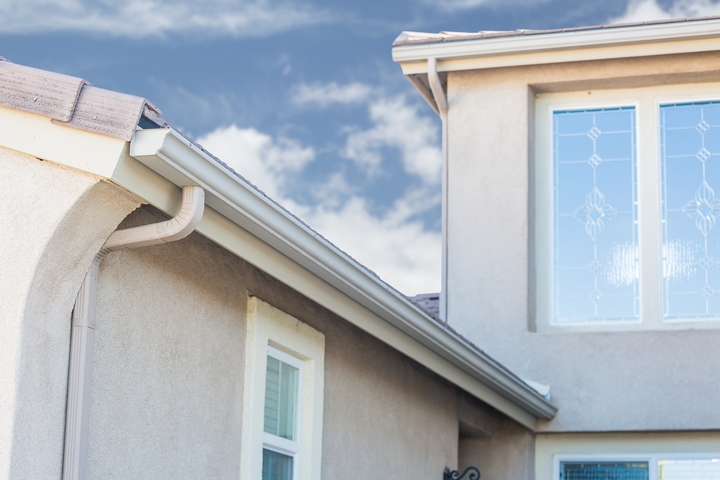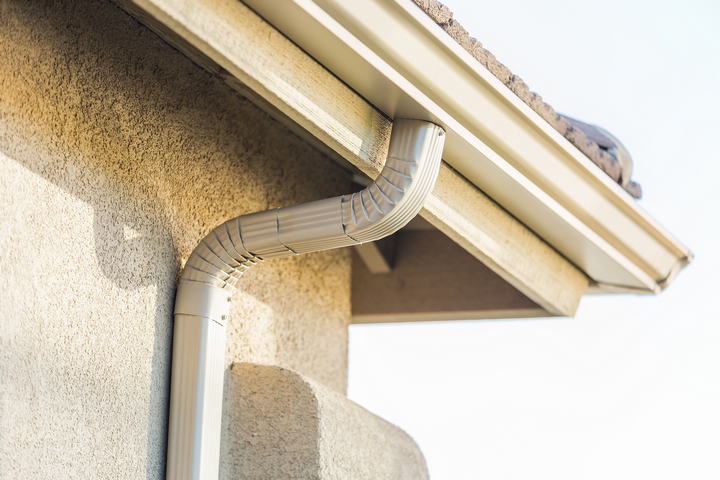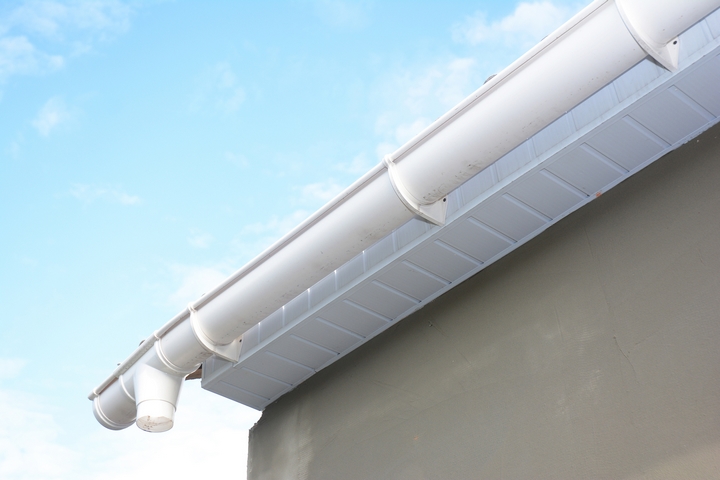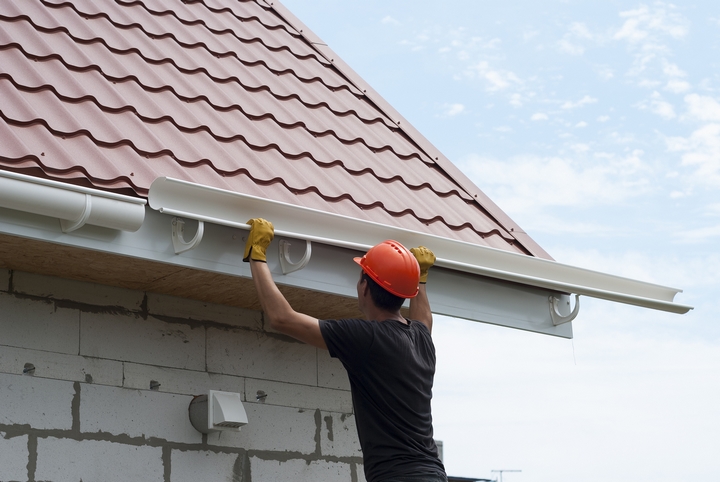A homeowner might not know it by looking at the rain gutters installed on the homes in your neighborhood but there are a surprisingly diverse range of options available. Rain gutters in different shapes and sizes are readily available, and easily matched to any house or budget. To share some of the differences between rain gutter types, this list looks at style, purpose, and material used.
Below are the twelve most common rain gutter types:
1. Aluminum gutters

Aluminum is the most popular rain gutter selection for residential homes. It is lightweight, easy to install, and rust-resistant. If you’re living in a region prone to a lot of snow, you’re going to want aluminum gutters in at least a .027 gauge thickness to be able to handle the added weight. Aluminum can be painted, comes in various colors, and costs are generally up to $9/foot.
2. Copper gutters

Copper is an alternative to aluminum and is an exceptional rain gutter material. Copper is not as easily installed as aluminum and usually required a professional installer, as the seams and joints need to be welded. Copper is pricier as well with a cost for materials and labour being up to $25/foot. For this reason, copper is usually only added to high-end homes and historic restorations.
3. Seamless aluminum gutters

A subcategory of aluminum rain gutters, ‘seamless aluminum’ is gutters which are continuous. A fabricator’s required to form the gutter on-site, customizing it to the length required from a spool of flat aluminum. For seamless aluminum, no hauling is needed. Seamless gutters means no leaking, as there are no seams. Cost for seamless aluminum is more than regular aluminum at up to $11/foot.
4. Steel gutters

Steel rain gutters are very strong. Although galvanized steel is resistant to rust, in the long-term, steel can begin rusting within 5-10 years. Like aluminum, steel can be painted however it is much heavier. Professional installation is usually required. Cost of steel rain gutters is up to $10/foot.
5. Vinyl gutters

Vinyl gutters come with many benefits, being lightweight, inexpensive, and easy to install. One of the drawbacks of vinyl is that there are not many colors to choose from. The color of vinyl is also susceptible to fading from being under the sun. In severe cold, vinyl can also crack. In general, colder climates are not recommended to use vinyl for their gutters. Costs are up to $5/foot.
6. Zinc gutters

Zinc gutters are durable, long-lasting, and require a professional installation as the seams and joints require welding. Zinc rain gutters are common to high-end residences and historic restorations. They’re one of the more expensive rain gutter types, with costs up to $24/foot.
7. K-style gutters

K-style rain gutters are characteristic with flat bottoms and backs, with the front side being decorative. The front can sometimes be made to mimic crown molding, using a curve or ogee. K-style gutters are available in several different styles and made be made from a variety of different materials.
8. Half-round gutters

Half-round gutters are found on many older, historic homes however they are not usually found on many newer builds. As the name implies, these rain gutters are made from half-round tubes. Some may choose half-round gutters if they’re looking to add to a vintage or rustic look on a property.
9. Victorian ogee gutters

Victorian ogee gutters are ‘old Gothic’ style and are very distinctive in their profile. They are based off older cast-iron gutters common in the 1800s. These days, Victorian ogee gutters appear traditional and yet stylish. Victorian or period homes work well with this rain gutter type. They are relatively shallow gutters so a lot of water flow is not going to be able to be held in it. Victorian ogee gutters work best on small homes.
10. Fascia gutters

Fascia gutters are installed frequently on homes which do not already have fascia boards installed. They act as a gutter as well as a fascia board. Fascia gutters hide the edges of rafter tails and creates a smooth line along the home’s edges. This design prevents water damage as well as animals from trying to enter the home through the rafter tails.
11. European gutters

European gutters are a subcategory of half-round gutters. They are installed on homes with a visible half-round hanger. European gutters tend to be very aesthetically pleasing, adding class to the home – especially when they are from copper. Areas prone to temperature changes and severe storms are well recommended to use European rain gutters. That’s because they are made from extremely strong materials and can generally hold up in wild weather without damage.
12. Galvalume

Galvalume is a type of steel, coated in a combination of aluminum and zinc which ultimately creates a strong metal gutter that can withstand damage and rust without issue. Galvalume is made from dipping steel into liquid zinc and aluminum. Now, this is a specialty gutter that most won’t choose for their home. That said, galvalume can outlast galvanized steel in most cases and is an extremely strong type of steel – well worth considering for harsher climates.

